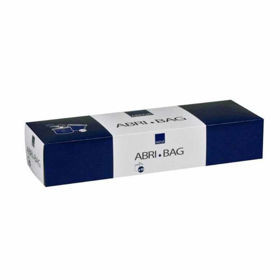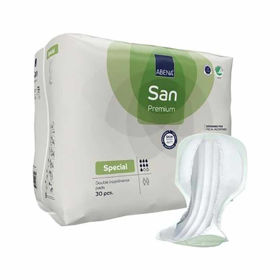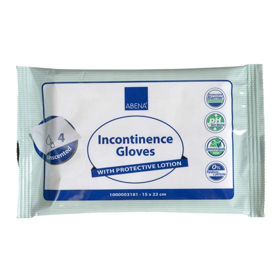Vprašanje stranke:
Ali je inkontinenca enako kot uhajanje urina? Vprašanje anonimne stranke
Odgovor farmacevta:
Inkontinenca in uhajanje urina sta povezana, vendar nista povsem enaka pojma. Inkontinenca je širši izraz, ki označuje nezmožnost nadzorovanja izločanja telesnih tekočin, najpogosteje urina ali blata. Urinska inkontinenca je specifična vrsta inkontinence, ki se nanaša na nezmožnost zadrževanja urina.
Uhajanje urina je simptom urinske inkontinence, ki se pojavi, ko posameznik izgubi nadzor nad mehurjem, kar vodi do nenadzorovanega uhajanja urina. To lahko vključuje majhne količine, ki uhajajo med telesno dejavnostjo, smehom ali kihanjem, ali večje izpuste, ki zahtevajo pogoste menjave oblačil ali uporabo zaščitnih pripomočkov.
Urinska inkontinenca se deli na več vrst, vključno z:
- stresno inkontinenco,
- urgentno inkontinenco,
- prelivno inkontinenco in
- funkcionalno inkontinenco.
Stresna inkontinenca se pojavi, ko pritisk na mehur, kot je pri kašljanju, smejanju ali dvigovanju težkih predmetov, povzroči uhajanje urina. Urgentna inkontinenca se pojavi, ko posameznik nenadoma občuti močan, neobvladljiv nagon po uriniranju, kar vodi do nenadzorovanega izpusta urina. Prelivna inkontinenca se zgodi, ko se mehur ne izprazni popolnoma, kar vodi do stalnega ali občasnega kapljanja urina. Funkcionalna inkontinenca pa se pojavi, ko fizične ali duševne ovire preprečujejo pravočasno uporabo stranišča. Inkontinenca je pogostejša pri starejših ljudeh, vendar lahko prizadene ljudi vseh starosti.
Kaj povzroča inkontinenco urina?
Med najpogostejšimi vzroki so starostne spremembe, ki oslabijo mišice mehurja in sečnega sistema. Nosečnost in porod lahko povzročita poškodbe mišic medeničnega dna, kar vodi do inkontinence. Debelost povečuje pritisk na mehur, kar lahko prav tako prispeva k uhajanju urina. Hormonske spremembe med menopavzo vplivajo na elastičnost tkiv, kar lahko vpliva na inkontinenco. Kronične bolezni, kot so diabetes, Parkinsonova bolezen in multipla skleroza, lahko vplivajo na živce, ki nadzorujejo mehur. Okužbe sečil lahko dražijo mehur in povzročajo začasno inkontinenco.
Nekatera zdravila, kot so diuretiki, sedativi in mišični relaksanti, lahko vplivajo na mehur in povzročajo inkontinenco. Kirurški posegi v predelu medenice, vključno s histerektomijo, lahko vplivajo na delovanje mišic in živcev ter povzročajo inkontinenco. Zmanjšana mobilnost ali druge fizične omejitve lahko otežijo pravočasno uporabo stranišča, kar vodi do uhajanja urina. Psihološki dejavniki, kot so stres, anksioznost ali depresija, lahko prav tako vplivajo na nadzor mehurja.
Ali se inkontinence urina lahko znebimo in pozdravimo?
Inkontinenco urina je mogoče obvladovati in v mnogih primerih tudi pozdraviti, odvisno od vzroka in resnosti stanja. Pristopi k zdravljenju vključujejo vedenjske spremembe, zdravila, fizioterapijo in kirurške posege.
Vedenjske spremembe so pogosto prvi korak pri obvladovanju inkontinence. Te vključujejo vadbo mišic medeničnega dna (Keglove vaje), nadzor nad vnosom tekočine, urinsko vadbo (načrtovano uriniranje) in spremembe v prehrani. Te metode lahko izboljšajo mišični tonus in nadzor nad mehurjem.
Medikamentno zdravljenje je lahko učinkovito pri nekaterih vrstah inkontinence. Obstajajo zdravila, ki lahko zmanjšajo krčenje mehurja, povečajo zmogljivost mehurja ali okrepijo mišice zapiralke. Ta zdravila so pogosto predpisana pri urgentni inkontinenci.
Fizioterapija, posebej za mišice medeničnega dna, lahko znatno izboljša simptome inkontinence. Fizioterapevti uporabljajo različne tehnike, vključno z biofeedbackom in električno stimulacijo, da pomagajo pacientom okrepiti mišice in izboljšati nadzor nad mehurjem.
Kirurški posegi so običajno zadnja možnost in se uporabljajo pri bolnikih, pri katerih druge metode niso bile uspešne. Kirurgija lahko vključuje postopke, kot so suspenzija vratu mehurja, vstavitev trakov za podporo sečnice ali umetni sfinkter mehurja.
Poleg teh pristopov obstajajo tudi druge metode, kot so uporaba pripomočkov za inkontinenco (na primer vložki in plenice), terapija z uporabo elektrostimulacije in v nekaterih primerih tudi spremembe življenjskega sloga, ki lahko pomagajo zmanjšati simptome inkontinence.
Katera zdravila brez recepta lahko pomagajo pri urinski inkontinenci?
Pri urinski inkontinenci lahko pomagajo nekatera zdravila in dodatki brez recepta. Tukaj je nekaj primerov:
- Brusnični izdelki: brusnični sok ali kapsule lahko pomagajo pri splošnem zdravju sečil.
- Bučna semena: izdelki, ki vsebujejo bučna semena ali olje, so na voljo kot prehranski dodatki.
- Izvlečki soje: izoflavoni iz soje so na voljo kot dodatki.
- Vitamin D: na voljo v obliki tablet ali kapsul.
- Magnezij: na voljo kot prehranski dodatek v obliki tablet ali praškov.
Inkontinenca urina - katere vaje lahko pomagajo?
Pri urinski inkontinenci so vaje za krepitev mišic medeničnega dna pogosto zelo koristne. Tukaj je nekaj vaj, ki lahko pomagajo:
- Keglove vaje: mišice medeničnega dna okrepite na način, da poskusite ustaviti tok urina med uriniranjem. Ko jih sčasoma tako okrepite, lahko izvajate tudi tovrstne vsahe: stisnite mišice medeničnega dna in zadržite 5 sekund, nato sprostite za 5 sekund. Ponovite 10-15 krat. Postopoma povečujte čas stiskanja in sproščanja do 10 sekund. Te vaje ponavljajte trikrat na dan.
- Vaje z žogo: sedite na žogo z ravnim hrbtom in nogami trdno na tleh. Stisnite mišice medeničnega dna in zadržite 5-10 sekund, nato sprostite. Ponovite 10-15 krat.
- Most: lezite na hrbet z upognjenimi koleni in stopali na tleh. Dvignite boke proti stropu, hkrati stiskajte mišice medeničnega dna. Zadržite 5 sekund, nato popustite. Ponovite 10-15 krat.
- Stisni in dvigni: stisnite mišice medeničnega dna in jih držite, kot da jih dvigujete navzgor. Zadržite 5-10 sekund, nato sprostite. Ponovite 10-15 krat.
- Pilates in joga: priporočljivo je, da vaje izvajate redno, saj lahko traja kar nekaj tednov do mesecev, preden opazite izboljšanje. Če niste prepričani, kako pravilno izvajati vaje, lahko poiščete nasvet fizioterapevta, specializiranega za težave z medeničnim dnom.
Zanimivo branje: Kaj je inkontinenca?








 Facebook
Facebook
 Instagram
Instagram
 info@moja-lekarna.com
info@moja-lekarna.com

